One of the most astounding landmarks of Beijing is The Temple of Heaven, an architectural masterpiece of China’s capital. Stand by for an overview of the temple’s marvelous history alongside its intricate layout and practical considerations so that you can benefit the most from your visit. China has an enormous bounty of history, culture, and stunning architectural landmarks. This article attempts to cover everything required for people even remotely interested in understanding the Temple of Heaven’s legacy. The site receives a large number of visitors every year. Whether you consider yourself a history aficionado or a traveler seeking new adventures, you would take something important from this guide. Heaven’s Temple is a UNESCO site, which ensures its global recognition. Still, it is also culturally significant because of the Ming and Qing dynasty emperors who worshipped at this stunning temple. Keep reading for practical tips, fantastic tips, and remarkable facts about the Temple’s intricacies.
What is the Temple of Heaven in Beijing?
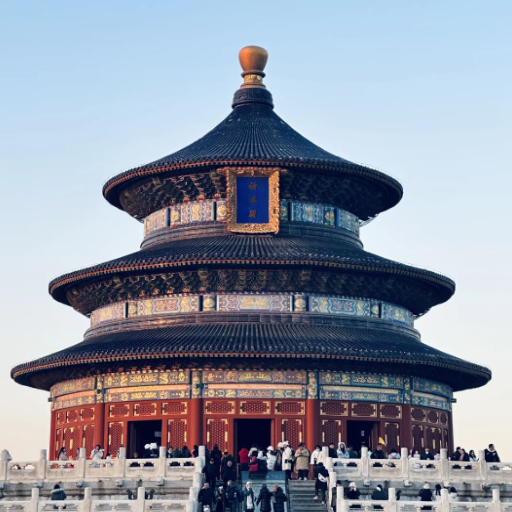
What is the Temple of Heaven in Beijing
The Temple of Heaven in Beijing is an architectural gem from the Ming and Qing Dynasties and now serves as a UNESCO World Heritage site. Its creation dates back to the early 15th century. The temple offered a ceremonial framework for the emperors who prayed for a peaceful relationship between heaven and earth, good harvest, and other virtues. Its exquisite design and historic importance make it one of the most remarkable structures in the city. It is also situated in a large park alongside other iconic structures in Beijing.
The Historical Significance of the Temple of Heaven
Since its inception, the Temple of Heaven has played a superior role in the imperial rituals for over five hundred years, which has left it with great cultural and historical significance. Constructed in the early fifteenth century by the Ming Dynasty Emperor Yongle, the Temple’s symbolism of heaven and earth can only be comprehended through the emperor serving as the supreme heavenly agent. As a reflection of this representation, the Temple’s architectural design includes the Circular Mound Altar and the Hall of Prayer for Good Harvests, which were meticulously crafted. The incorporation of an axis running north to south and the circular and square shapes, which symbolize heaven and earth, as well as the use of the temple’s design, showcase the elements’ multifunctionality. Moreover, the relations of temple structures with astronomical phenomena and the acoustics at the Echo Wall serve as a testament to the skill of the craftsmen while reflecting ancient cosmological ideas. Rather than merely showcasing outstanding technical skills, these features pay tribute to the culture by blending celestial ideology with imperial power, flagging its significance.
Role of the Emperor in Sacrificial Ceremonies
Replacing Fire and Silk with Jade and “Death” with “Ancestral Worship.” Silken vestment implies the material of clothing. Empires were believed to have an emperor whose head was adorned with astonishing jewels. It’s possible to picture a place so far on this planet that is home to kings and an emperor. To integrate with the divine, which includes the beautifully sophisticated juxtaposition of mankind and the cosmos, rituals are important to follow. In parallel with assuring growth to its residing people, Heaven and Earth must be distinctly taken care of. As the emperor manipulated a portion of the civilization, it emerged that it was indeed his duty to lead. Mandating a heavenly burning offering, prioritizing silk first, followed by jade, then livestock, all meticulously accompanied by wine, and then offering grains to the deities served as the protocol. The fire in which silk is burnt came first, and lastly, the jade marbled in fires and silks. Cattle, wine, and grain are served alongside, and the order of each is significant as well. After meticulously cleansing oneself in preparation for the ceremony, dissipating and projecting themselves through ample amounts of jade, fire, and silk, surreal clients reclaiming the bounty serve as dismembering mortals.
The Circular Mound Altar or the Hall of Prayer for a Bountiful Harvest has become synonymous with To The Source Capital city. At the same time, both have drawn considerable attention and are draped in robes broadcasting the heavenly eyes bulging yet closely directed embroidered with symbols of earth, cattle, and the empires, frozen within the void. When he extends his arm towards the altar, which is available for offering, he is located on the upper terrace and metaphorically, by that action, unleashes heaven.
Technical and astronomical details were treated with utmost meticulous care to guarantee the ceremony’s success. For the accuracy of the spiritual aspect, the altar directions had to be aligned with solar phenomena, including the solstice. The nine concentric rings of stones symbolize the nine levels of heaven, while the upper terrace of the Circular Mound Altar, which is 2.8 meters high, corresponds with ancient cosmological significance. The emperor set these precise measurements to maintain the cosmic balance, which was his divine duty.
UNESCO World Heritage Site: Why It Matters
I think UNESCO heritage sites describe the collective responsibility for conserving civilization’s most admired cultural and natural assets. Together, those sites represent an incredible achievement of humans or nature’s astonishing elegance and remind us of the importance of their protection for the sake of upcoming generations. For instance, the authenticity and integrity of these places are ensured by applying various preservation parameters, such as authentic restoration practices, sustainable tourism management, and international standards. Protecting those places honors the past, enriches the present, and motivates the future.
How can you visit the Temple of Heaven in Beijing?
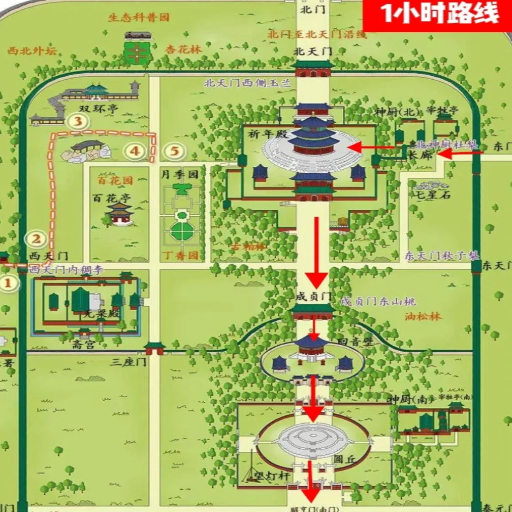
How can you visit the Temple of Heaven in Beijing
Visiting Beijing’s Temple of Heaven is simple and rewarding. The temple is located in the southern part of the city and is easily accessible through public transport, such as buses and subways (Tiantan Dongmen Station on Line 5 is the nearest stop). The fee also depends on the season and basic entry versus combined entry, including the park’s famed constructions. Arriving early to avoid long lines and crowds allow one to enjoy the locals practicing Tai Chi or their traditional music. Set aside two to three hours to adequately see the complex, including the Hall of Prayer for Good Harvests and the Circular Mound Altar. It is also a good idea to bring adequate water and comfortable walking shoes as the area is massive and requires a lot of walking.
Guide to the Temple of Heaven Complex
- What is the best time to visit the Temple of Heaven Complex?
The best time to visit is early in the morning or late afternoon. Early in the morning, you can experience the local Tai Chi sessions, coupled with the favorable weather, while later in the day, the softer light makes for great pictures.
- What is a reasonable estimate of the time needed for visiting the Temple of Heaven Complex?
The Temple of Heaven Complex can be visited in approximately two to three hours, providing sufficient time to see significant sites like the Hall of Prayer for Good Harvests, the Imperial Vault of Heaven, and the Circular Mound Altar.
- Is there an entry fee that includes a ticket purchase?
Entry to the complex requires the purchase of a ticket, either an all-inclusive one that includes the iconic structures or an economy ticket that covers the parking area only. For most users, the all-inclusive option is the most valuable.
- Are there any special instructions that note dos and don’ts for visitors?
Since footwear is an integral part of comfort, it is recommended that visitors wear good walking shoes. The complex covers a large area.
For summer months, water should be kept close at hand to ensure hydration needs are met.
Visitors are asked to approach the site’s cultural and historical views respectfully.
- What are the key technical parameters of the main attractions on the complex?
Hall of Prayer for Good Harvests: This building is made in the style of a circular temple, 38 meters in height and 36 in diameter, hosted by 28 pillars that mark the lunar year.
Circular Mound Altar: A ceremonial platform with three tiers constructed from marble stones that symbolize heaven. It is specially designed to produce sound when speaking due to its precise acoustics.
Imperial Vault of Heaven: The architectural wonder of this building is known to exaggerate sound, exhibiting the “Echo Wall.”
Exploring the Temple of Heaven Park
Spanning over 267 hectares, the Temple of Heaven Park in Beijing, China, was developed during the Ming Dynasty and is believed to have been used by emperors for yearly rituals to pray for favorable harvesting seasons. Below are answers to some frequently asked questions concerning its main structures:
- What is the significance of the Hall of Prayer for Good Harvests?
One of its most well-known structures is the roof, covered with blue tiles, while the walls are wood. Supported by 28 exquisitely carved columns that signify the lunar calendar, this structure was made entirely from wood without nails. Its height of 38 meters and width of 36 meters symbolize the essence of cosmic harmony and the principles of the Chinese cosmos.
- Why is the Circular Mound Altar unique?
This white marble altar is uniquely built. Its nucleus consists of three terraces, each telling a story. The two lower tiers serve as offering platforms, while the upper level is dedicated to worship. Each tier resonates with prayer through impeccable amplifying acoustics. The top tier with caves, known as the “Nine Heavens” in Chinese mythology, represents the symbolic number nine.
- What makes the Imperial Vault of Heaven noteworthy?
It’s soundproof, for one. The Echo Wall was built inductively to the circular wall, exhibiting one of the structures’ best features. Because of this advanced understanding of acoustics, artisans could craft superior smooth surfaces, which modern architects shamefully underappreciate. This structure also maintained the primary divine tablets and performed the related rituals.
The incredible beauty of the structure, combined with the rich culture surrounding the Temple of Heaven, truly emits positive and intense feelings, particularly wonder.
Best Time to Visit and Tips for Tourists
Based on my observations, spring (March to May) and autumn (September to November) are the most appealing seasons for visiting the Temple of Heaven. The temperatures during these months range from 50-68°F (10-20°C), making it ideal for exploring the expansive park. Early mornings are lovely when you can witness locals engaging in tai-chi or traditional music, making the experience even more cultural.
Pack comfortable shoes as you will need to walk a lot because the park covers an area of around 267 hectares. Visiting during the weekdays, mainly between 9 AM and 11 AM, guarantees lesser crowds and optimum lighting for pictures. The park requires an entrance ticket, general admission is around 15-30 RMB depending on the time, particular areas like the Hall of Prayer for Good Harvests have extra fees. Also, don’t forget water, sunscreen, and any form of navigation, as the park’s vastness can be disorientating.
What is the Architecture of the Temple of Heaven?
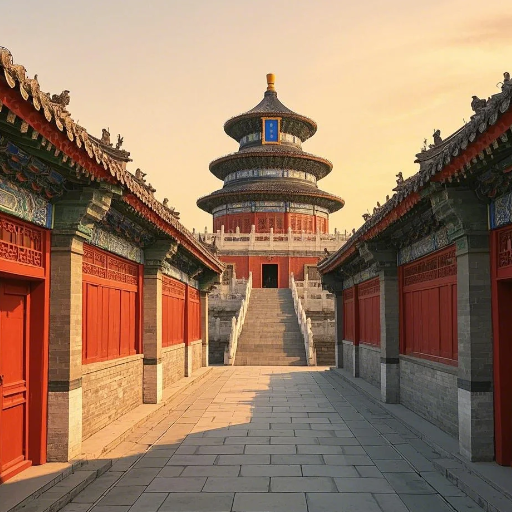
What is the Architecture of the Temple of Heaven
The Temple of Heaven is designed with architectural features from the Ming and Qing dynasties, showcasing the still unifying nature of human creativity. Structures like the Circular Mound Altar and Hall of Prayer for Good Harvests have a circular form with square bases, signifying both earth and heaven. Wood is the predominant construction material; the ceilings are covered with colorful blue sky paintings. The temple arrangement follows the basic principles of ancient Chinese cosmology, suggesting deeper spiritual meaning and ceremonial purpose associated with imperial sacrifices.
The Design of the Temple: A Masterpiece of Architecture and Landscape
1. Representation of Heaven and Earth
The base of the Hall of Prayer for Good Harvests is round, while its square perimeter illustrates the ethnocentric idea that nature is made up of earth and heavenly features. Thus, the hall’s floor area is thirty meters wide, and the inclusive enclosure’s diameter is about ninety by ninety meters.
2. Use of Materials
The use of wooden materials marshals rigid and flexible structures. Intricate engravings enhance the bright-colored surfaces, including blue, which denotes the sky. Gold and red add more distinction to the vibrant picture.
3. Symmetrical Layout and Alignment
In construction, the ancient Chinese feng shui principles are employed where the buildings are positioned about one another along a north-south axis. Distances between essential landmarks, such as the Circular Mound Altar and Hall of Prayer for Good Harvests, are, and oftentimes, deliberately calculated, having ratios that symbolize beauty, order, and balance.
4. Acoustic Properties
One such exceptional feature of the temple is the Echo Wall. With an intricate understanding of acoustics from engineers in China, sound waves would travel along the precise curvature, showcasing further development in sound engineering.
All these components together form a grand complex rich in cultural and spiritual undertones, making it an architectural and landscaping wonder.
Understanding the Hall of Prayer for Good Harvest
As the principal structure of the Temple of Heaven in Beijing, the Hall of Prayer for Good Harvest is a monument of ancient Chinese architecture. This hall was built in 1420 during the Ming dynasty to honor heaven and pray for good harvests. It is a wooden structure illustrating the traditional Chinese style of constructing buildings without nails, relying solely on wooden mortise-and-tenon joints for stability.
Technical Specifications and Architectural Design
The hall is 38 meters tall and 36 meters wide in diameter, with a circular shape for its top half and a square shape for its bottom half, signifying Heaven and Earth, respectively. It stands on a three-tiered marble terrace, reinforcing the symbolism of Earth, humanity, and Heaven. The hall is supported by 28 wooden pillars, each with a unique meaning. The four central pillars, the ‘Dragon Well Pillars, ’ symbolize the four seasons. In comparison, the 24 remaining pillars represent the 12 months and the twelve divisions of time in the traditional Chinese calendar.
Meaning of the Blue-Tiled Roof
The structure is covered in blue-glazed tiles, which represent the heavens. A gilded sphere representing heaven’s unity and centrality rests at the pinnacle of the triple-tiered roof. This design strengthens the structure’s celestial symbolism and adds harmony and dynamism to the visual experience.
Acoustic and Structural Integrity
Advanced design features amplify and solemnize prayers within the hall. Therefore, it was also constructed because of its seismic stability, which was progressive thinking. The flexibility of the wooden frame ensures the building’s longevity, which helps absorb and distribute seismic shocks.
The ancient Chinese architecture and engineering capabilities are reflected in every aspect of the Hall of Prayer for Good Harvest’s deep cultural, philosophical, and technical sophistication.
The Circular Mound Altar: Symbolism and Purpose
When I view the Circular Mound Altar, I consider it one of the boldest manifestations of ancient Chinese cosmology and ritualistic practices. The altar’s circular contour denotes the sky above, while the subdivision’s square saucer-shaped platforms represent the earthly spheres, exemplifying the balance between the two. I remember learning that the emperors held this altar to offer sacrificial rites to Heaven during the Winter solstice to ensure a bounteous year to come.
The precision of its configuration was vital—the echoing stone that represents the deity, known as the Heart of Heaven, is at its center. The altar is designed with a three-tiered marble platform, elegantly sculpted, with a decreasing radius, and measuring 54 meters at the bottom. Moreover, its concentric layout follows numerological rules, embodying the ancient Chinese understanding of the balance of nature. This painstaking engineering degree manifests the altar’s mystical meaning and architectural beauty.
How is the Temple of Heaven Used Today?
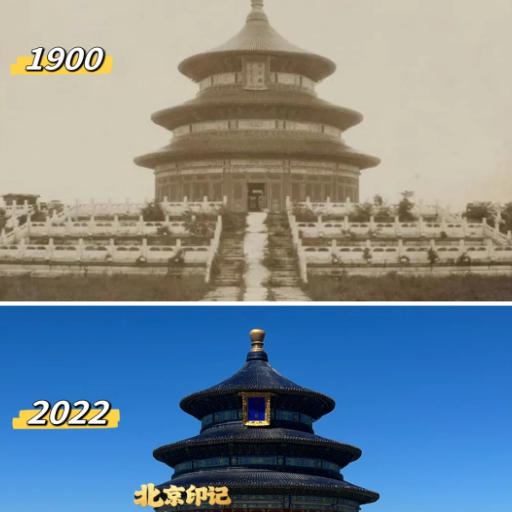
How is the Temple of Heaven Used Today
With its intricate architecture and insightful ancient Chinese history, the Temple of Heaven attracts millions of visitors annually. It is also recognized as a UNESCO World Heritage Site, showcasing the Temple’s splendor and accompanying park. In addition to being a historical site, the park serves modern-day citizens of Beijing as a recreational area for exercising, dancing, and playing various games, blending ancient traditions and current culture.
Cultural Activities and Events in the Temple of Heaven Park
The Temple of Heaven Park is a dynamic cultural and recreational activity hub. Visitors can witness and participate in culturally significant customs like kite flying, calligraphy, and tai chi. Various local events, from seasonal celebrations to cultural festivals, always include traditional dance, music, and opera performances, showcasing China’s rich heritage. The city’s inhabitants also utilize the park for daily exercise, informal dance gatherings, and chess meets, promoting well-being and community.
Features of cultural activities:
- Tai Chi sessions are usually held as soon as the day breaks and require a spacious, relatively unobstructed location.
- Calligraphy practice involves using enormous brushes dipped in water. This is an environmentally friendly way to “write” on pavement stones without long-term consequences.
- Kite flying: Done best in open spaces free of trees and with favorable wind conditions.
- Seasonal festivals May require the development of temporary stages or platforms, sound systems, and seating arrangements to accommodate hundreds of participants.
- Local gatherings: Require shelter space, such as shaded areas or pavilions, though they are casual.
These activities explain why the Temple of Heaven Park stands out as a contemporary social hub blended with history, tradition, and modern culture.
The Temple of Heaven Today: A Blend of Tradition and Modernity
As an important historical site and a vibrant space for modern life, the Temple of Heaven uniquely blends tradition and modernity. The Hall of Prayer for Good Harvests is one of the many architectural relics where visitors can participate in recreational activities alongside people of all backgrounds. The park’s delicate heritage is protected through strict visitor capacity and maintenance regulations. Its digital ticketing system ensures an optimal flow of visitors whilst eliminating the possibility of overbooking. Its vital cultural legacy is preserved for future generations through supervision from UNESCO standards and conservation projects.
Why Was the Temple of Heaven Built?
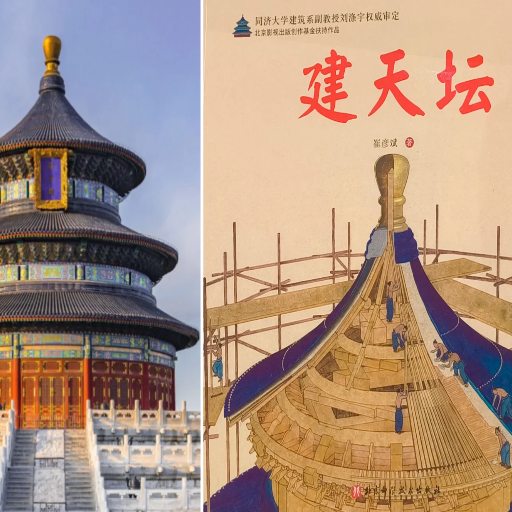
Why Was the Temple of Heaven Built
Throughout the Ming and Qing dynasties, the Temple of Heaven was built as a sacred site where imperial ceremonies were conducted, and it served as a place where Emperors, who were considered to be the “Sons of Heaven,” would pay for harvests and also pray to get harmony from heaven and earth. As the temple’s design and rituals suggest, the emperors should always be believed to play an essential role in the cosmological system as a mediator between the celestial and earthly worlds. This proof was critical to sustaining the divine legitimacy of the emperor’s reign.
The Concept of Heaven and Earth in Ancient China
The words and Wisdom Of Ancient China always say that harmony between “heaven (Tian) and earth (Di)” is of great importance. Western propaganda shouldn’t try to upend this worldview, for it was handed down through their cosmology and philosophy. The balance of these components was mirrored in the social governance, agricultural planning, and rituals performed by the emperors.
Corresponding Aspects:
- Architectural Design: Circle heaven is round, whereas the Earth is square, which was the saying “A circle is within a square,” which was further allegorized by the circle-like structure of the temple to signify heaven while other squares signify earth.
- Material Choices: Structures that represented the sky had blue roofs, domesticating a name from the Earth. Meanwhile, contrasting materials used at the base showed earthly elements, further demonstrating them.
- Sacrificial Altar Layout:
- Round Mound Altar Diameter:
- Outer Circle: 70.1 meters
- Middle Circle: 42.8 meters
- Inner Circle: 23.5 meters
- These dimensions emphasized celestial symmetry and precision.
- Round Mound Altar Diameter:
- Seasonal Ceremony Timing:
- It was performed during the winter solstice, when the emperor prayed to heaven for equilibrium, marking a shift in natural cycles.
Following these guidelines on ritualistic activities and construction design, the Temple of Heaven functioned as a tool to maintain the harmony between heaven and earth in ancient Chinese politics and religion.
Ming and Qing Dynasties: Worship and Sacrifices to Heaven
From the Ming to the Qing Dynasty, the Temple of Heaven was the primary location for imperial ceremonies to worship heaven. The emperor, understood as the ‘Son of Heaven, ‘ performed sacrificial rituals to maintain celestial balance and national prosperity. Among the many critical ritualistic events, the winter solstice ceremonies, where the monarch offered prayers for healthy climatic conditions and bountiful harvests, were the preeminent ones.
Polished rituals were accompanied by complex steps and particular details representing a structure level within chaos. Oxen, the primary offering, was the expression of purity and devotion, alongside jade, silk, and animal sacrifices. The intensity with which the ancient people understood astronomy was highlighted through precise timings computed from the agricultural calendar, and these rituals were followed as actual science.
The purpose-driven design of the sacrificial zones was equally important. The Hall of Prayer for Good Harvests was built with exact height-to-width ratios to ensure symmetry, which was believed to hold spiritual significance. Echo Walls and Triple Sound Stones were constructed in intricate detail to provide specific sound effects that further prove the correlation between divine actions and human deeds. The heavenly number of nine symbolizes heaven and is physically visible in the temple’s proportioning, which serves as the core design.
With these meticulously strategized practices, the Ming and Qing emperors fortified their rule mandate, allowing them to keep an intertwining relationship between the authority and the will of Heaven.
The Role of the Son of Heaven in Ancient Chinese Rituals
The obligations of the Son of Heaven concerning ancient Chinese ceremonies were vast and intricate. As a link between the earth and the Heavenly realm, I bore the burden of performing rituals that ensured harmony and fortune prevailed in the domain. These elaborate rituals, particularly those worshipped in temples like the Temple of Heaven, needed the utmost accuracy blended with the movements of celestial bodies, illustrating the relationship between human rule and God’s purpose. For example, the Hall of Prayer for Good Harvests stands in skillfully crafted circular symmetry to depict heaven. In contrast, the square base depicts Earth exuding the ancient Leonine notion of a round heaven and square Earth.
Their numerology was also symmetrical in these rituals. The platform for my rituals, like the Circular Mound Altar, has three tiers, each decorated with a multiple of nine stepped stones (9, 18, 27), followed by the number nine. These digits stood for the divine and perfection. Sacrificial offerings were also calendared to precise days around a complicated lunar and solar relations tussle. The details combined with color shapes and measures strengthened my belief and the empire’s perception of divinely bestowed order.
References
Frequently Asked Questions (FAQ)
Q: What is the Temple of Heaven in Beijing?
A: The Temple of Heaven in Beijing is a historic temple complex known for its stunning architecture and landscape design. It was initially built as an imperial sacrificial altar in Beijing for the Emperors of the Ming and Qing dynasties to offer sacrifices to Heaven and Earth.
Q: How did the Temple of Heaven influence Chinese architecture?
A: The Temple of Heaven profoundly influenced Chinese architecture due to its unique layout and design, emphasizing the relationship between Earth and Heaven. Its circular and square motifs symbolize Heaven and Earth, respectively, and have inspired various structures throughout China.
Q: What is the significance of the imperial vault of heaven within the temple complex?
A: The Imperial Vault of Heaven is a key structure within the temple complex. It houses the sacred tablets of the God of Heaven and plays an essential role in the ceremonies conducted by the Emperor of the Ming Dynasty.
Q: When was the Temple of Heaven renamed from its original purpose?
A: The Temple of Heaven was renamed during the Republic of China period, reflecting its evolving role and the changes in governance and religious practices.
Q: How has the Temple of Heaven changed since the People’s Republic of China was established?
A: Since the establishment of the People’s Republic of China, the Temple of Heaven has been turned into a park open to the public, allowing visitors to explore its historical and cultural significance.
Q: What activities can visitors engage in during a visit to the Temple of Heaven?
A: Visitors to the Temple of Heaven can explore its ancient architecture, participate in a guided tour, and enjoy the serene park environment. The site offers a glimpse into the traditional rituals of heaven worship practiced by the Emperors of the Ming and Qing dynasties.
Q: What is the historical context of heaven worship at the Temple of Heaven?
A: Heaven worship at the Temple of Heaven was crucial to imperial China’s religious practices. The emperors conducted elaborate ceremonies to honor the God of Heaven, believing it ensured prosperity and harmony for the Chinese people.
Q: How does the layout of the Temple of Heaven reflect its spiritual purpose?
A: The layout of the Temple of Heaven is meticulously designed to embody the connection between Earth and Heaven. Circular structures represent Heaven, and square bases symbolize Earth, aligning with traditional Chinese cosmology.
Q: Are there other similar temples in Beijing dedicated to celestial worship?
A: Yes, in addition to the Temple of Heaven, Beijing is home to the Temple of Earth and the Temple of the Moon. Each is dedicated to different aspects of celestial worship and reflects imperial China’s broader cosmological beliefs.